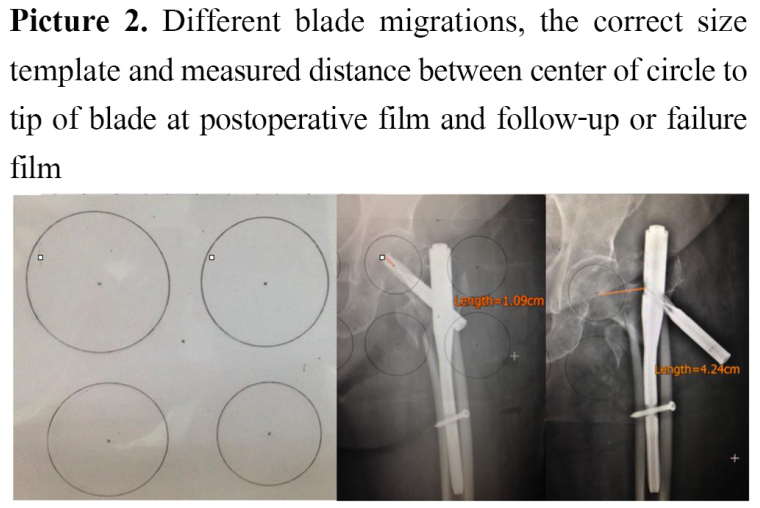RADIOLOGIC PREDICTIVE FACTORS FOR CUT OUT FAILURE OF PROXIMAL FEMORAL NAIL ANTI-ROTATION IN TREATMENT OF INTERTROCHANTERIC FRACTURES
DOI:
https://doi.org/10.55374/jseamed.v3i2.39Keywords:
Intertrochanteric fractures, Proximal Femoral Nail Anti-rotation fixation, Radiologic factors, Fixation failureAbstract
Background: Proximal femoral fractures are the most common type of fracture among elderly patients. Moreover, half of the fractures are unstable types (AO31A2-A3). The aim of surgical treatments of these fractures is to achieve stable fracture fixation allowing early weight-bearing and returning to pre-fracture functional status. Even though the Tip Apex Distance (TAD) less than 25mm has been used to identify the appropriate position of the lag screw, little data has demonstrated the optimized TAD using a helical blade.
Objectives: The study aimed to identify radiologic factors influencing fixation failure using a newly designed Proximal Femoral Nail Anti-rotation (PFNA)
Methods: A total o 400 cases of low energy intertrochanteric fractures undergoing PFNA fixation were reviewed. Of these, 10 cases of fixation failure were further investigated determining the exact cause. Of 390 patients with successful outcomes treated using PFNA fixation, 20 cases were randomized as a control group. A comparative study was conducted between those with fixation failure group and control group.
Results: The displacement in lateral view and sum of displacement between AP and lateral view of radiographs were noted to have significant differences between the group (p=0.002 and 0.015). No significant differences were found between the groups in terms of Neck Shaft Angle (NSA) and Tip Apex Distance (TAD) including migration of the PFNA blade in the Cleveland zone. Additionally, the cutoff point was determined as less than 0.91 using the sum of the distance of displacement of AP with specificity of 95% and sensitivity of 80%. Moreover, the lateral view of the radiographs was less than 1.42 with specificity of 80% and sensitivity of 80%.
Conclusion: This study demonstrated that the displacement in lateral hip view and sum of the displacement in both AP and lateral hip view were alternative parameters measured to decrease failure rate in PFNA. These parameters may be useful as an alternative to decrease the mechanical failure of PFNA fixation.
Downloads
Metrics
References
Geller JA, Saifi C, Morrison TA et al. Tip-apex distance of intramedullary devices as a predictor of cut-out failure in the treatment of peritrochanteric elderly hip fractures. Int Orthop. 2010 Jun; 34(5):719-22. DOI: https://doi.org/10.1007/s00264-009-0837-7
Frei HC1, Hotz T, Cadosch D, et al. Central head perforation, or "cut through," caused by the helical blade of the proximal femoral nail antirotation. J Orthop Trauma. 2012; 26(8):e102-7. DOI: https://doi.org/10.1097/BOT.0b013e31822c53c1
Parker MJ, Handoll HH. Gamma and other cephalocondylic intramedullary nails versus extramedullary implants for extracapsular hip fractures. Cochrane Library Database System Rev. 2010; 9:CD000093. DOI: https://doi.org/10.1002/14651858.CD000093.pub5
Simmermacher RKJ, Ljungqvist J, Bail H, el al. AO - PFNA studygroup: The new proximal femoral nail antirotation (PFNA) in daily practice: results of a multicentre clinical study. Injury. 2008; 39(8):932-939. DOI: https://doi.org/10.1016/j.injury.2008.02.005
Baumgaertner MR, Curtin SL, Lindskog DM, Keggi JM. The value of the tip-apex distance in predicting failure of fixation of peritrochanteric fractures of the hip. J Bone Joint Surg Am. 1995; 77(7):1058-1064. DOI: https://doi.org/10.2106/00004623-199507000-00012
Andrej NN, Anthony LO, Piers J Y. Should the tip-apex distance (TAD) rule be modified for the proximal femoral nail antirotation (PFNA). Journal of Orthopaedic Surgery and Research. 2013; 8:35. DOI: https://doi.org/10.1186/1749-799X-8-35
Dieter ML, Michael R. Baumgaertner MR. Unstable Intertrochanteric Hip Fractures in the Elderly. J Am AcadOrthopSurg. 2004; 12:179-190. DOI: https://doi.org/10.5435/00124635-200405000-00006
Evans EM: The treatment of trochanteric fractures of the femur. J Bone Joint Surg Br 1949; 31:190-203. DOI: https://doi.org/10.1302/0301-620X.31B2.190
Haidukewych GJ, Israel TA, Berry DJ. Reverse obliquity fractures of the intertrochanteric region of the femur. J Bone Joint Surg Am. 2001; 83:643-650. DOI: https://doi.org/10.2106/00004623-200105000-00001
Sommers MB, Roth C, Hall H, Kam BC, Ehmke LW, Krieg JC, Madey SM, Bottlang M. A laboratory model to evaluate cutout resistance of implants for pertrochanteric fracture fixation. J Orthop Trauma. 2004;18:361-368. DOI: https://doi.org/10.1097/00005131-200407000-00006
Cleveland M, Thompson F, Wilson H, Ishizuka T. A ten-year analysis of intertrochanteric fractures of the femur. J Bone Joint Surg Br. 1959; 41-A:1399–1408. DOI: https://doi.org/10.2106/00004623-195941080-00003
Gardner MJ, Stephen M, Briggs A, et al. Radiographic outcomes of intertrochanteric hip fractures treated with the trochanteric fixation nail. Injury. 2007; 38:1189–1196. DOI: https://doi.org/10.1016/j.injury.2007.03.014
Zhou JQ, Chang SM. Failure of PFNA: helical blade perforation and tip apex distance. Injury. 2012, 43(7):1227–1228. DOI: https://doi.org/10.1016/j.injury.2011.10.024
Ashok SG, Muthukumar S, Naveen CT. Results of proximal femur nail antirotation for low velocity trochanteric fractures in elderly. Indian J Orthopv. 46(5); Sep-Oct 2012PMC3491790. DOI: https://doi.org/10.4103/0019-5413.101036
Şemmi K, Taşkın A, Cemil K, et al. Mechanical failures after fixation with proximal femoral nail and risk factors. Clinical Interv in Aging. 2015;10 1959–1965. DOI: https://doi.org/10.2147/CIA.S96852
Liu JJ, Shan LC, Deng BY, Reason and treatment of failure of proximal femoral nail antirotation internal fixation for femoral intertrochanteric fractures of senile patients. Genetics and Molecular Research. 2014;13 (3): 5949-5956. DOI: https://doi.org/10.4238/2014.August.7.10
Cyril J, Shishir S : type II intertrochanteric fracture : proximal femoral nailing (PFN) versus dynamic hip screw (DHS). Arch Bone joint surg. 2016; 4(1) :23-28.
Ajay PS, Vivek K. Intramedullary Nail Versus Dynamic Hip Screw; Intramedullary Nail (Advantages And Disadvantages). Trauma international. 2015;1(1);17-20.
Green JR, Nemzek JA, Arnoczky SP, et al. The effect of bone compaction on early fixation of porous-coated implants. J Arthroplasty. 1999;14:91–7. DOI: https://doi.org/10.1016/S0883-5403(99)90208-5
Appelt A,Suhm N,Baier M, et al. Complications after intramedullary stabilization of proximal femur fractures. a retrospective analysis of 178 patients. Eur J Trauma Emerg Surg. 2007;33(3):262–267. DOI: https://doi.org/10.1007/s00068-007-6010-3
Fogagnolo F, Kfuri M Jr, Paccola CA. Intramedullary fixation of pertrochanteric hip fractures with the short AOASIF proximal femoral nail. Arch Orthop Trauma Surg. 2004; 124(1):31–37. DOI: https://doi.org/10.1007/s00402-003-0586-9
Domingo LJ, Cecilia D, Herrera A, Resines C. Trochanteric frac- tures treated with a proximal femoral nail. IntOrthop. 2001;25(5): 298–301. DOI: https://doi.org/10.1007/s002640100275

Downloads
Published
How to Cite
Issue
Section
License
The Journal of Southeast Asian Medical Research will hold the copyright to all published articles. The publisher's production department handles copyright forms once a manuscript is accepted and scheduled for publication.







